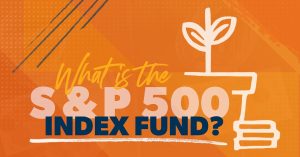Image by GettyImages; Illustration by Bankrate
Key takeaways
- Consumers are holding on to their cars longer due to rising new car prices, increased vehicle reliability and personal finance goals like avoiding monthly payments.
- Older cars are harder to finance due to lender restrictions around age and mileage.
- Borrowers may face higher interest rates, shorter loan terms or even loan denials when trying to finance aging vehicles.
“I would never purchase a new car unless I won the lottery,” confesses Bankrate editor Natasha Cornelius, who owns a 2011 Jeep Patriot. Her car has been paid off since 2016, and her insurance only comes out to be around $53 after discounts.
Like her, many Americans are holding on to their vehicles longer than ever. The average age of passenger cars on U.S. roads is projected to reach 14.1 years in 2025, according to research by Hedges & Company.
What does this mean for drivers, especially those who are looking into financing a car today? Whether you’re thinking about keeping your old car or buying a used one, aging vehicles affect loan eligibility, interest rates and insurance costs — and can even change how long you’ll be allowed to borrow.
Cars are aging on U.S. roads
The average vehicle on American roads is older than ever, and several key trends are driving this shift.
Why vehicle age matters for auto loans
While older vehicles are becoming more common, financing them isn’t always easy. Age and mileage restrictions, higher interest rates and shorter loan terms can all make it harder, and more expensive, to borrow.
1. Age limits on underwriting
Vehicle prices remain high, and older cars are starting to make up a larger share of the market. Without financing, purchasing a reliable used vehicle becomes much harder. For many drivers, it can also mean delaying replacement or relying on cash purchases.
Many lenders set strict age or mileage cutoffs for vehicle loans, often capping eligibility at 10 years old or 125,000 miles. If the car exceeds these limits, you may struggle to qualify for financing at all. Even when used auto loans are approved, lenders may shorten the term length or increase other restrictions to mitigate risk, adding to your costs as a borrower.
2. Loan rates skew higher
Used vehicles, especially older models, are considered riskier collateral by lenders. The older the car, the more expensive the loan can become in terms of annual percentage rate (APR). As a result, buyers financing these cars often face higher interest rates compared to new or low-mileage vehicles.
For borrowers with less-than-perfect credit, this risk is compounded. High rates can significantly increase monthly payments or the overall cost of the loan, making affordability a challenge even on older, seemingly budget-friendly cars.
3. Shorter repayment periods
Lenders typically limit loan terms for older vehicles, with maximum repayment periods shrinking to 36 or 48 months. That means even if you finance a car at a manageable price, the condensed loan timeline can result in much higher monthly payments compared to financing a new vehicle over 60 to 72 months.
Shorter repayment windows can strain household budgets, particularly for buyers already stretching to afford a replacement car. Understanding these term limits upfront can help you prepare for the real cost of financing and avoid payment shock. You can also use an auto loan calculator to estimate how much your monthly payment will be based on the loan terms offered to you.
How to finance an older vehicle smartly
Even if you plan on shopping for a used car, the lasting impacts of the COVID-19 pandemic and new tariffs have made prices surge. There simply aren’t as many vehicles available as there is demand, which makes it more difficult to find the right car.
If you’re in the market for a high-mileage or older used car, these strategies can help:
- Get preapproved before shopping: Being preapproved for an auto loan allows you to shop like a cash buyer.
- Shop multiple lenders: Know your lender’s max car age limits before buying a vehicle, and use credit unions or online lending platforms in addition to dealerships.
- Consider a personal loan: If auto lenders are unwilling to finance an older car, consider taking out an unsecured personal loan instead.
- Keep the loan term short: Older cars depreciate quickly, so it’s best to stick with shorter loan terms of 60 months or less so you avoid becoming upside down on your loan.
- Invest in inspections and car condition reports: Being thorough and getting a used car inspection may help you make a case with lenders and negotiate prices.
Financing an antique or classic car
There are some lenders that offer financing for antique or classic cars, though you may have better luck using a personal loan to buy a car. And once you buy your car, look into getting classic car insurance.
Why some drivers are sticking with older cars
Buying a new car is fun, but the most financially savvy tactic may be simply sticking with the car you already own — and managing your auto loan well. Many consumers are intentionally avoiding new car purchases — and their reasons go beyond just cost. Here’s what Bankrate staff and contributors had to say about keeping their older vehicles.
Bottom line
With record-high car prices, tighter lending standards and better vehicle durability, it’s no surprise that Americans are keeping their cars longer — or choosing to buy older ones.
While it can be harder to finance an aging vehicle, it’s not impossible. Know your lender’s restrictions, shop around and consider alternatives like personal loans or buying in cash. And if your current car still runs reliably and doesn’t cost a fortune to maintain, holding onto it might be the smartest financial move you make this year, especially if you choose to refinance your current auto loan at a lower rate.
Why we ask for feedback
Your feedback helps us improve our content and services. It takes less than a minute to
complete.
Your responses are anonymous and will only be used for improving our website.
Help us improve our content
Read the full article here














